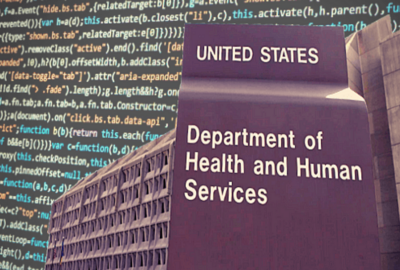Postal Service’s IG’s office proclaims 2013 as year of mobile
Gary Barlet, the OIG's chief information officer, is taking a three-pronged approach to helping employees access data from anywhere, at anytime. The steps inclu...
wfedstaff | April 17, 2015 4:40 pm
For the Postal Service’s Office of the Inspector General, nearly every technology upgrade or new piece of hardware or software is focused on moving the office in one direction: mobile.
With more than two-thirds of the office’s 1,130 employees located outside the Washington, D.C., metro region, Gary Barlet, the chief information officer for the Office of Inspector General, said ensuring these workers in about 100 field offices have access to applications and data anywhere and at anytime is his top priority for fiscal 2013 and beyond.
“As we’ve laid out our strategic vision, I’ve kind of of declared this — I know it sounds a little clichéd — our year of mobility,” Barlet said. “My job is to figure out ways to support that highly mobile workforce. So I’ve laid out a strategy to focus on mobility to take advantage of virtualization, a bring-your-own-device strategy and cloud services.”
Thin client is the goal
The Office of Inspector General (OIG) is furthest along with virtualization. Barlet said when came to the office from the Air Force a few months ago, one of the most pleasant surprises was the progress the organization had made around virtualizing servers and applications.
The OIG has more than 400 servers that are virtualized, and Barlet would like to move into the PC or laptop level by implementing a thin client set up.
“Right now, we currently procure about 1,000 laptops a year as we go through to support our workforce and do that tech refresh cycle that everyone find themselves in as they try to keep up with the technology,” Barlet said. “I’m trying to work hard to change that dynamic, move to a thin client environment so I don’t have to chase the technology in the boxes as much as providing the services to the customer.”
He said by virtualizing both the front end infrastructure and back end storage and computing power, OIG workers would have access to their data in a secure environment no matter where they were working.
“What we are looking at doing, and we’re just now starting to get into this, is a lot of the virtualization solutions allow you to check in and check out your desktop,” he said. “So when you are disconnected, you can check out the desktop and work locally, and save your data locally, and then when you reconnect, you check that desktop back in and any changes you’ve made get converted back into the server room in the back end.”
Barlet said the OIG is piloting this technology with about 80 people and would like to expand it in the next six months.
BYOD is voluntary
The next step toward mobility is implementing a BYOD approach. Barlet said employees have the option to use their own smartphone or tablet, or use the government furnished device.
“We want to give users the flexibility to choose what they want to use and how they want to work,” he said.
The two big issues with BYOD are security, of course, and whether the agency can offer a stipend or some sort of partial monetary relief to the employee to help offset the costs of the device and service.
Barlet said they are addressing the security concerns by testing mobile device management software, which would create a secure container on the device that would include only federal information.
The stipend challenge is tougher. Barlet said as he talks to more employees, it’s surprising how many already are using their own devices for work.
“I think if you give users a choice, a lot of users will start to see that they are already are [using their personal devices] anyways and have incurred this expense so why not make their life easier and focus on doing the things the way they want to do it instead of blurring those lines,” he said.
Cloud is final piece
Barlet also is reorganizing one of the offices under him to focus more on mobile application development. He said the OIG will release its first mobile app for investigators in the coming month or so.
“Going forward, the line we have drawn is this, what is our core function in business as far as supporting our customers? Those are the things I want to focus the effort as far as the application development goes and all focused on mobile type applications,” he said. “We are trying to reduce our traditional or back-end application development we’ve been doing and look at providers to do that traditional development … like pay systems or leave systems.”
And that is where the third part of his mobile effort comes in, the cloud. Barlet said the Office of Inspector General has yet to jump into the cloud with both feet, but is preparing to by moving many of these back-end, administrative functions to a hybrid cloud.
“As we look at new services and things that we are bringing on board, we are looking at it in a different light of can we do cloud first on this particular solution set? Can it be an external cloud? Does it need to be an internal cloud?” Barlet said. “Those are new sets of questions we are asking as we look at new solutions sets. And at the same time, we are looking at what do we already own that we can migrate into the cloud?”
RELATED STORIES:
New technologies key to Postal Service revitalization
Cloud is the next chapter in the government’s identity management saga
Copyright © 2024 Federal News Network. All rights reserved. This website is not intended for users located within the European Economic Area.
Jason Miller is executive editor of Federal News Network and directs news coverage on the people, policy and programs of the federal government.
Follow @jmillerWFED







